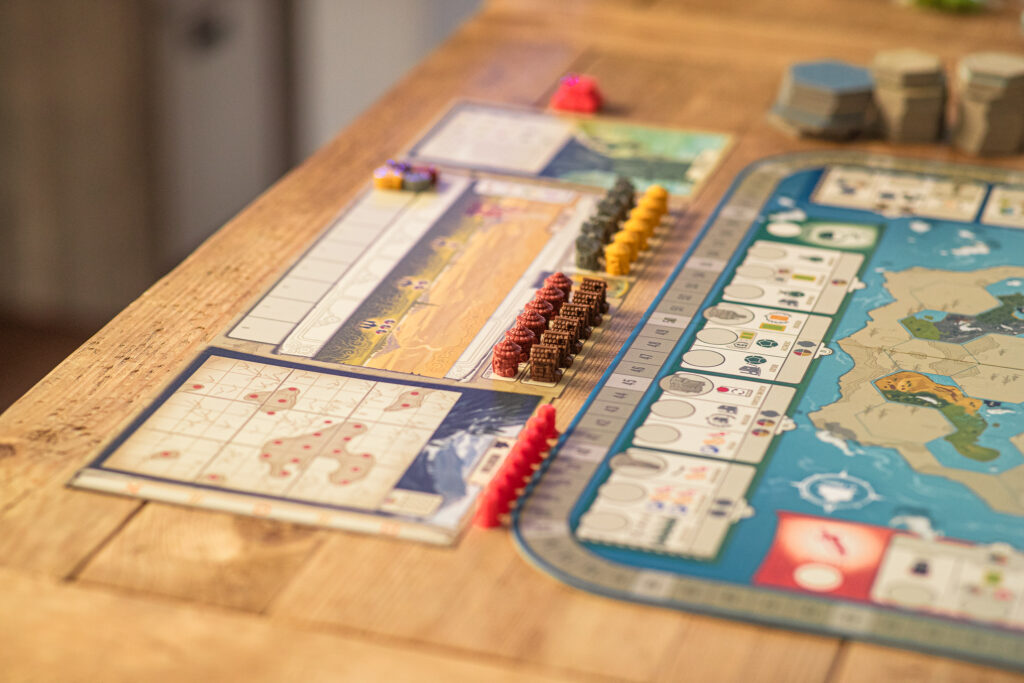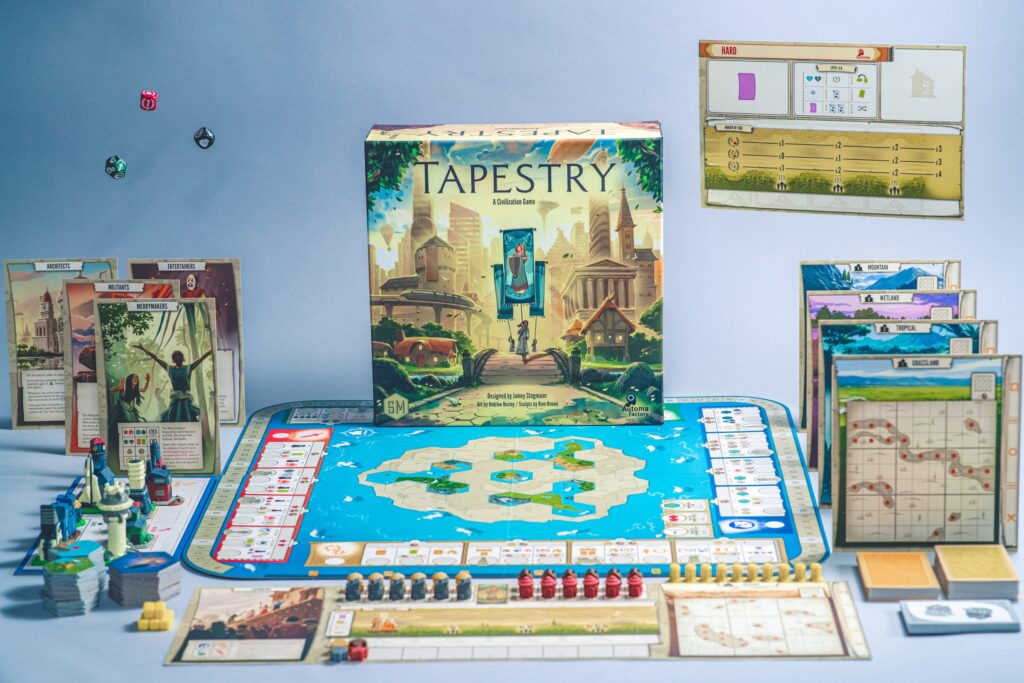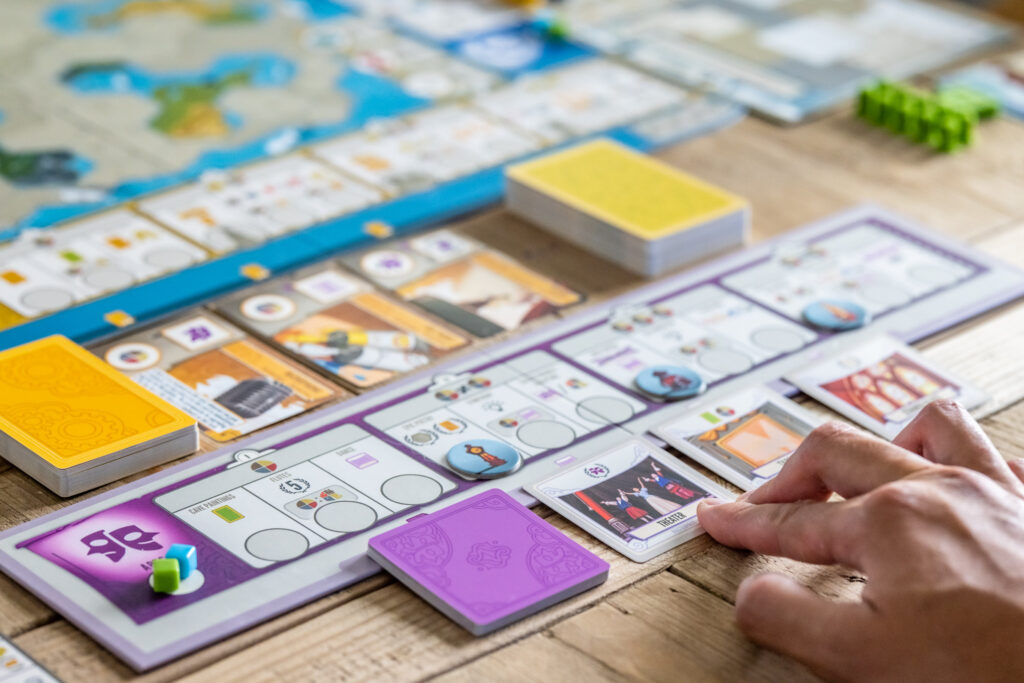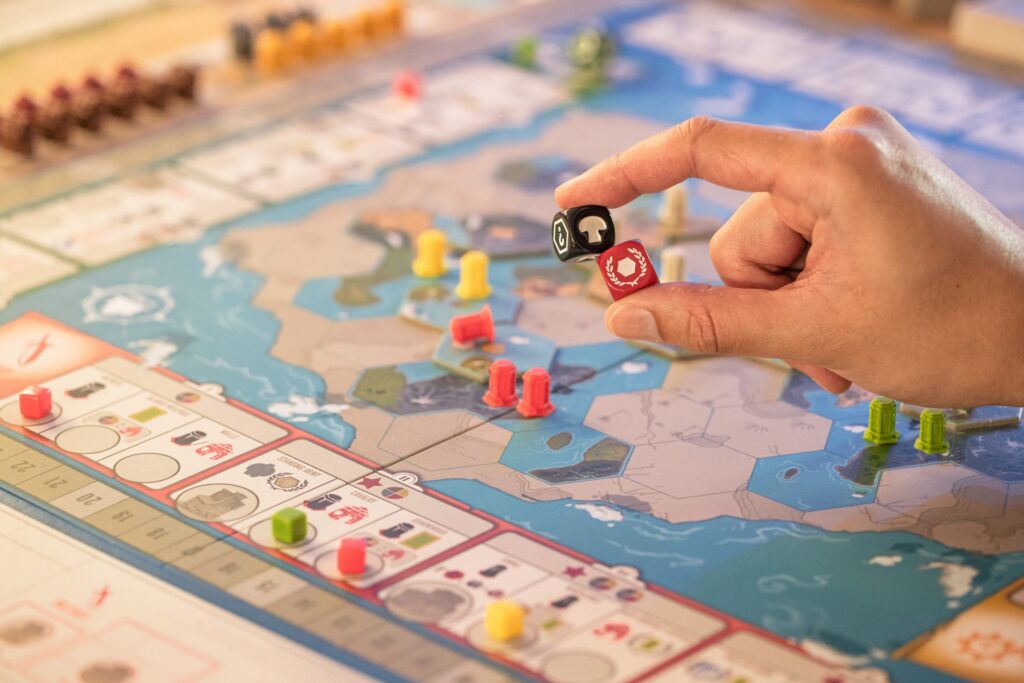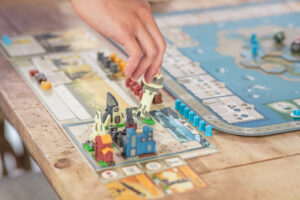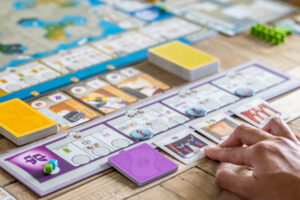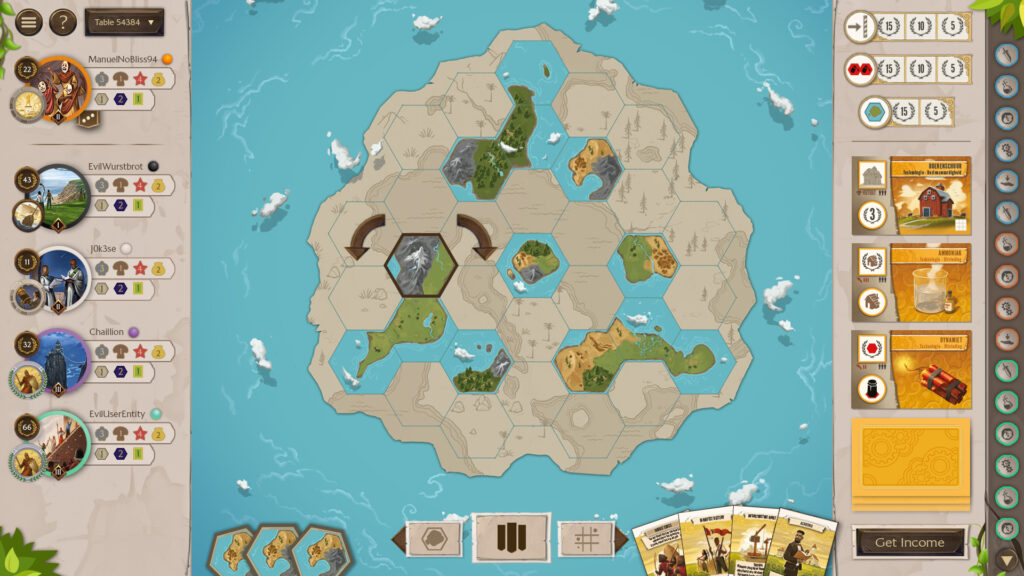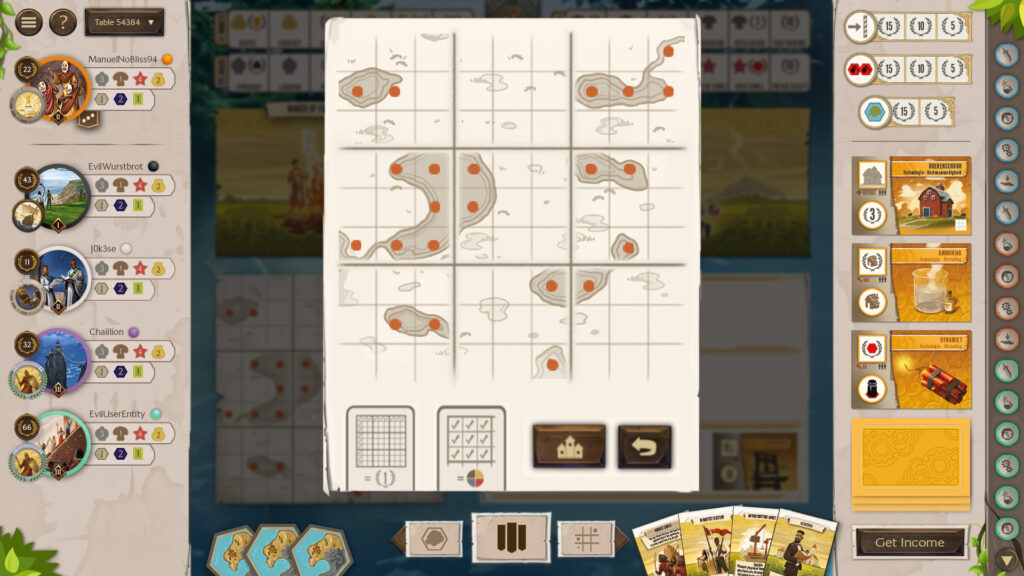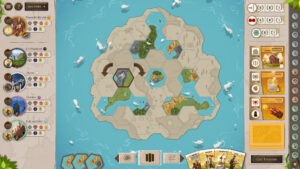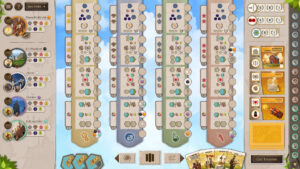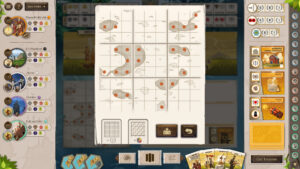Modern video games go through dozens of different hands throughout their creation and the total of its contributors are rarely acknowledged in full. Those who kick in the capital typically get the credit while those who provide the labour are left in the shadows. Strands of string crisscross and connect like assets and scripts in Unity, and the entire sum of those parts can’t be known or appreciated until the work is done.
Tapestry also happens to be the name of a board game by Stonemaier Games. Released in 2019, it sees players attempt to build and develop their own competing civilisations by making decisions about where and how much to invest across military, science, exploration and technology.
The game is a fairly archetypal engine-builder that owes a debt to 4X titles like Firaxis’ Civilization series, but it’s one elevated by the striking art that Andrew Bosley contributed.
According to him, the biggest inspiration for the game’s unique illustrations ended up being the project’s title.

